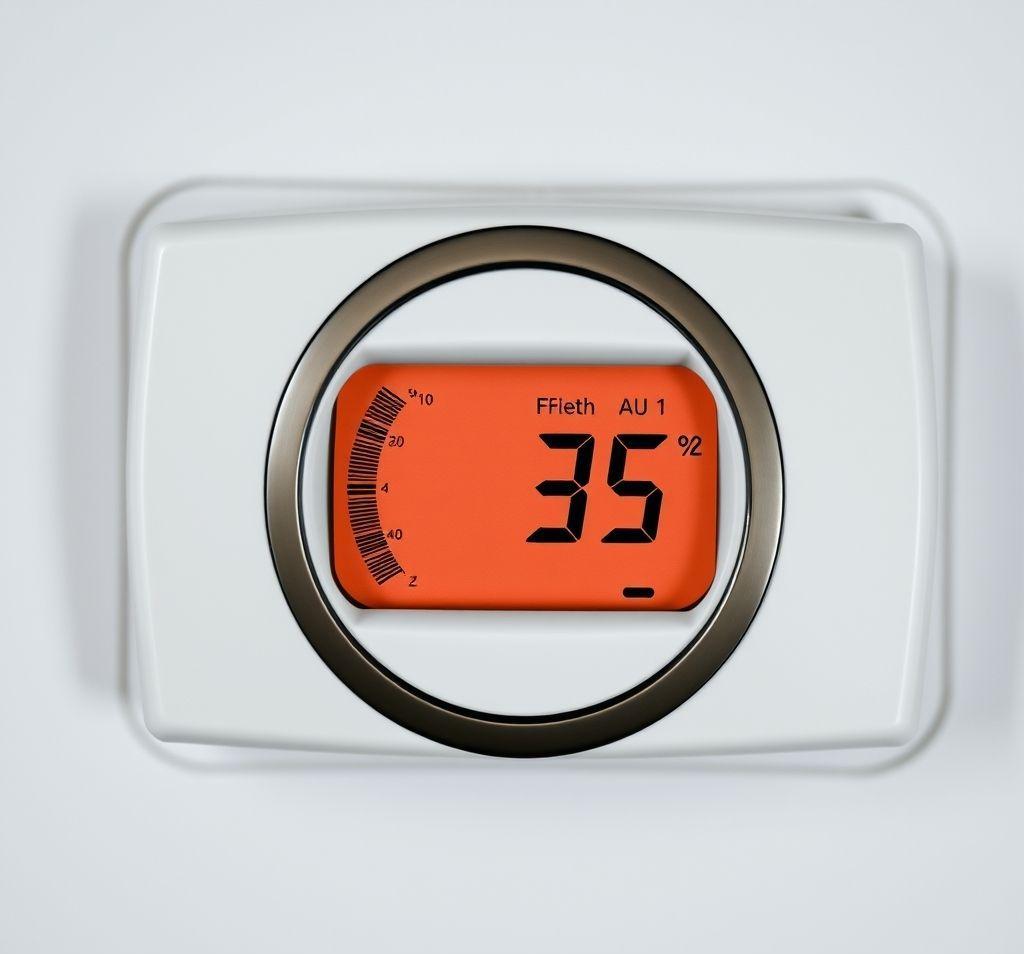Are you tired of manually adjusting your thermostat every day? Smart thermostats offer a solution by learning your family’s unique and changing schedule to optimize comfort and energy savings. In this article, we’ll delve into how these intelligent devices use learning algorithms, accommodate manual overrides, and how you can effectively “teach” your thermostat to achieve the perfect balance of comfort and cost-effectiveness.
The Brains Behind the Comfort: Understanding Learning Algorithms
Smart thermostats aren’t just programmable timers; they’re equipped with sophisticated learning algorithms that analyze your household’s temperature preferences and daily routines. These algorithms continuously collect data on your temperature adjustments, occupancy patterns, and even external weather conditions. Over time, the thermostat identifies patterns and predicts your desired temperature settings at different times of the day.
The type of algorithm used varies between brands, but most common are variations of statistical modeling and machine learning. For example, a thermostat might use a simple moving average to smooth out daily temperature fluctuations and identify your preferred temperature range. More advanced thermostats employ machine learning techniques like neural networks to model complex relationships between multiple factors, such as time of day, day of the week, occupancy, outdoor temperature, and even your home’s insulation characteristics. The thermostat learns to anticipate your needs and adjusts the temperature proactively, ensuring optimal comfort while minimizing energy waste.
It is important to note that this learning process needs time. It’s not an instant process and it depends on each specific model. At the beginning it is important to not change too often the temperature and give time to the thermostat to understand the patterns.
Your Control, Your Way: Manual Overrides and Temporary Holds
While smart thermostats excel at automating temperature control, they also understand that life doesn’t always follow a predictable schedule. That’s why they offer manual override options, allowing you to temporarily adjust the temperature to suit your immediate needs. Whether you’re staying home sick, hosting a party, or simply feeling a bit chilly, you can easily override the thermostat’s programmed schedule and set your desired temperature.
Most smart thermostats offer two types of manual overrides: temporary holds and permanent holds. A temporary hold maintains your specified temperature for a set period, after which the thermostat reverts to its programmed schedule. This is ideal for short-term adjustments, like an afternoon nap. A permanent hold, on the other hand, maintains your specified temperature indefinitely, effectively pausing the thermostat’s automated schedule. This is useful for extended periods of absence or when you want to deviate significantly from your usual routine. When using manual overrides, keep in mind that frequent and significant deviations from your programmed schedule can disrupt the thermostat’s learning process, potentially affecting its ability to optimize energy savings in the long run.
Teaching Your Thermostat Effectively: Best Practices for Optimal Performance
To maximize the benefits of your smart thermostat, it’s crucial to “teach” it effectively by providing accurate and consistent data. Here are some best practices to follow:
- Be Consistent: Maintain a relatively consistent schedule for the first few weeks after installation. This allows the thermostat to quickly identify your typical routines and temperature preferences.
- Provide Feedback: When you manually adjust the temperature, do so deliberately and consistently. Avoid making small, frequent adjustments, as this can confuse the thermostat’s learning algorithms.
- Utilize Geofencing (If Available): Many smart thermostats offer geofencing features, which use your smartphone’s location to detect when you’re coming home or leaving the house. This allows the thermostat to automatically adjust the temperature based on your occupancy status, ensuring comfort when you’re home and saving energy when you’re away.
- Label Your Schedule: Some smart thermostats allow you to create and label different schedules for weekdays, weekends, and holidays. This helps the thermostat understand your varying routines and adjust the temperature accordingly.
- Monitor and Adjust: Regularly monitor your thermostat’s performance and make adjustments as needed. If you notice that the thermostat is consistently setting the temperature too high or too low, manually adjust it and allow the thermostat to learn from your feedback.
Beyond the Basics: Advanced Features and Integrations
Many smart thermostats offer advanced features and integrations that further enhance their functionality and convenience. These include:
- Remote Control: Control your thermostat from anywhere using your smartphone or tablet.
- Energy Reports: Track your energy consumption and identify areas where you can save money.
- Voice Control: Integrate your thermostat with voice assistants like Amazon Alexa or Google Assistant for hands-free control.
- Smart Home Integration: Connect your thermostat to other smart home devices, such as smart lights and smart blinds, to create a more automated and energy-efficient home environment.
- Multi-Zone Control: If you have a multi-zone heating and cooling system, you can use multiple smart thermostats to control the temperature in different areas of your home independently.
By understanding these advanced features and taking advantage of integrations, you can unlock the full potential of your smart thermostat and create a truly personalized and energy-efficient home.
In conclusion, smart thermostats adapt to your family’s unique and changing schedule through learning algorithms, manual overrides, and user feedback. By understanding how these devices work and following best practices for “teaching” them, you can achieve optimal comfort, maximize energy savings, and create a more convenient and sustainable home. With the right approach, your smart thermostat can become an invaluable tool for managing your home’s climate and reducing your environmental footprint.



